Late-Blooming Fall Flowers That Attract Butterflies
Updated: Sep. 30, 2021
When other blooms are past their prime, looks to these fall flowers that attract butterflies to keep your garden alive with color.
By the time summer fizzles and lovingly tended plants fade, many gardeners are ready to throw in the trowel. But there are many plants well beyond traditional mums that save their best for last. By adding a few of these “late bloomers” to your garden, you’ll beautify your backyard with fall flowers that attract butterflies!
“Although we see butterflies mostly in the spring and summer, it’s important to remember that many still have a very strong need for nectar sources in the fall,” says Celia Stuart Whitman, director of the Day Butterfly Center at Callaway Gardens in Georgia. “Monarchs, for example, migrate thousands of miles and need good nectar sources along the way to successfully arrive at their overwintering sites in Mexico and southern California.”
Even butterflies that don’t migrate could use extra nourishment in fall. “Many other butterflies overwinter in various life stages,” Celia says. “Some overwinter as eggs, and the adults that lay them need that extra nutritional boost at the end of the season.”
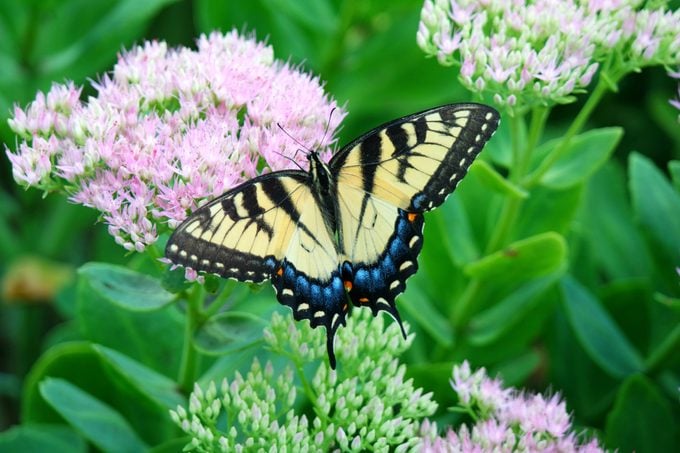
Sedum
These easy-to-grow plants actually prefer poor gravelly soils in a sunny spot with good drainage. Many species are available, and depending on where you live, they can be annuals, evergreens, semi-evergreens or hardy. The name of one of the top picks, Autumn Joy, says it all. Learn why fall is the perfect time to plant perennials.
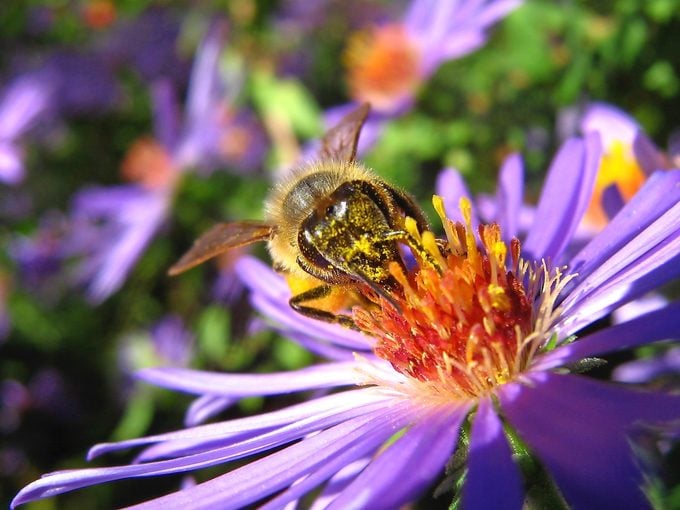
Aster
These pink or purple plants can reach heights of 24 to 60 inches, but shearing in late May will produce a pleasing, compact mound with loads of daisy-like blooms. Depending on species and location, asters can be annuals, perennials or biennials. Learn how to attract butterflies with late-blooming asters.
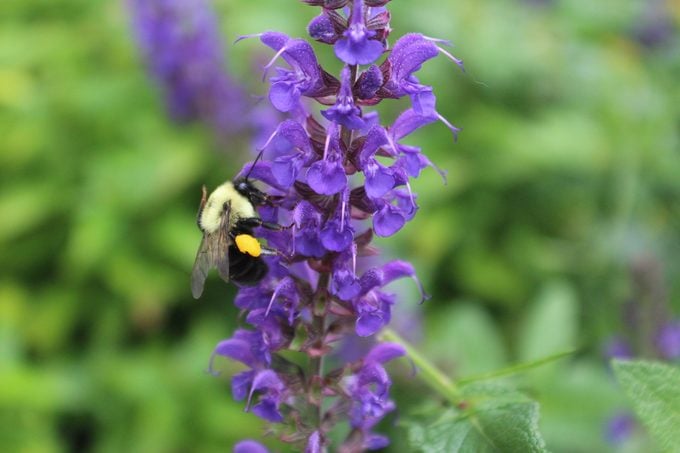
Salvia
This group of perennials and annuals bloom until the first hard frost. There are lots of species to choose from, and all produce long tubular blossoms that attract swallowtails, fritillaries and other butterflies with long proboscises needed to extract the nectar. Here’s how you can help migrating monarchs with fall nectar flowers.
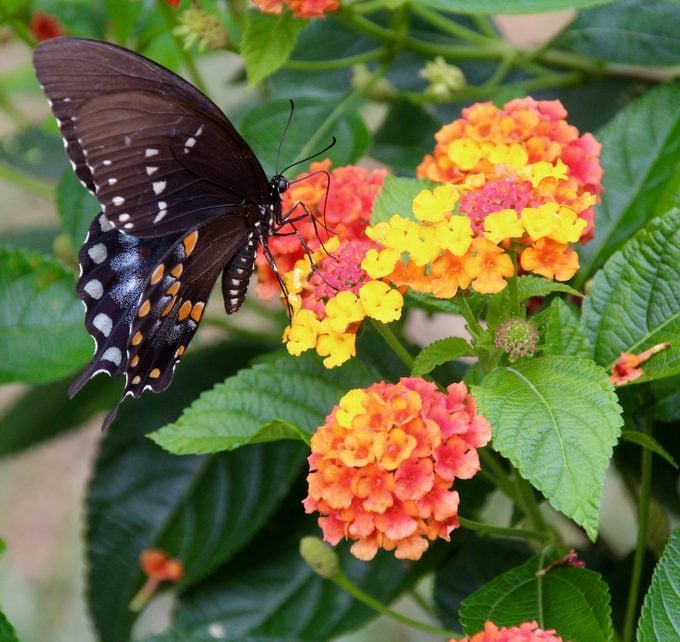
Lantana
Clusters of these small tubular flowers are a favorite of butterflies. They’re often grown as annuals in colder regions, and will begin blooming in summer and last well into fall until there’s a killing frost. In milder regions, lantana may grow into a shrub that’s 6 feet tall. Check out more long-blooming flowers for attracting butterflies and hummingbirds.
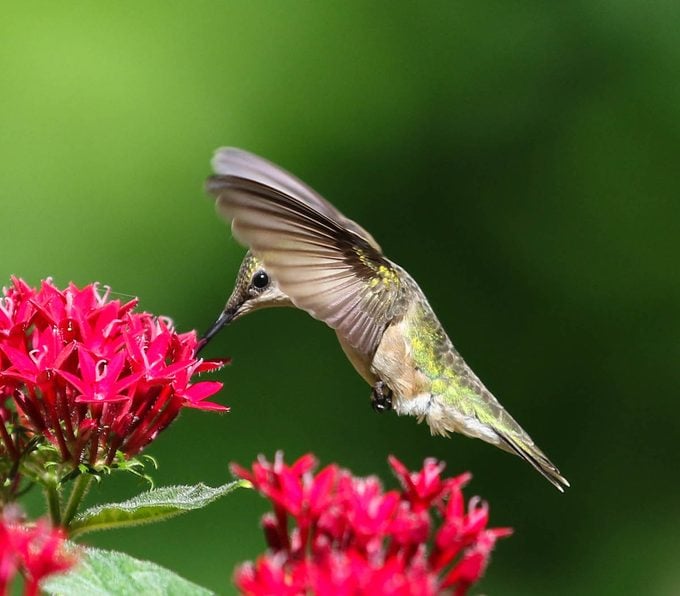
Pentas
These plants are not hardy to Canadian or American winters in most areas, but are annuals that butterflies love. The clusters of star-shaped flowers are often seen in brilliant red and are perfect for growing in beds, borders and even containers on a patio. Say goodbye to summer with fall-blooming annuals.
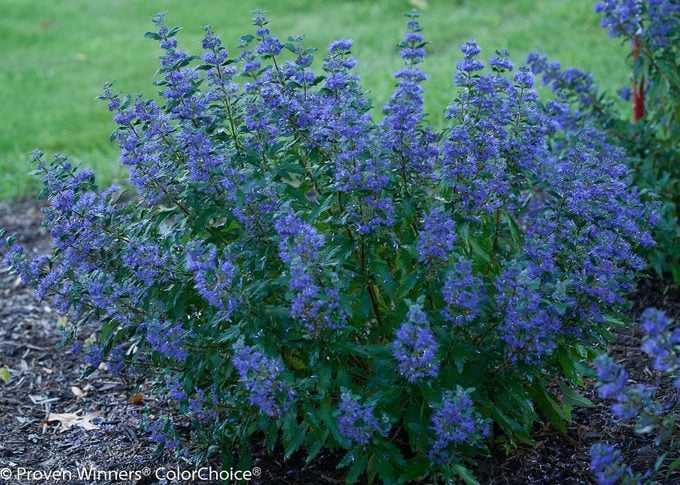
Beyond Midnight Bluebeard
In early fall, this deciduous shrub, botanically known as Caryopteris x clandonensis produces clusters of gorgeous deep-blue flowers set off by dark foliage. It grows 2 to 3 feet tall, with a similar spread, and is hardy in Zones 5 to 9. Once established, it’s drought-tolerant, too.
There are lots of other late bloomers to choose from. Choose native varieties when possible to ensure they can handle an early frost or two. Visit a local nursery or contact your county Extension service to find the late-blooming plants that work best in your area. And make sure you do these easy garden chores for fall.